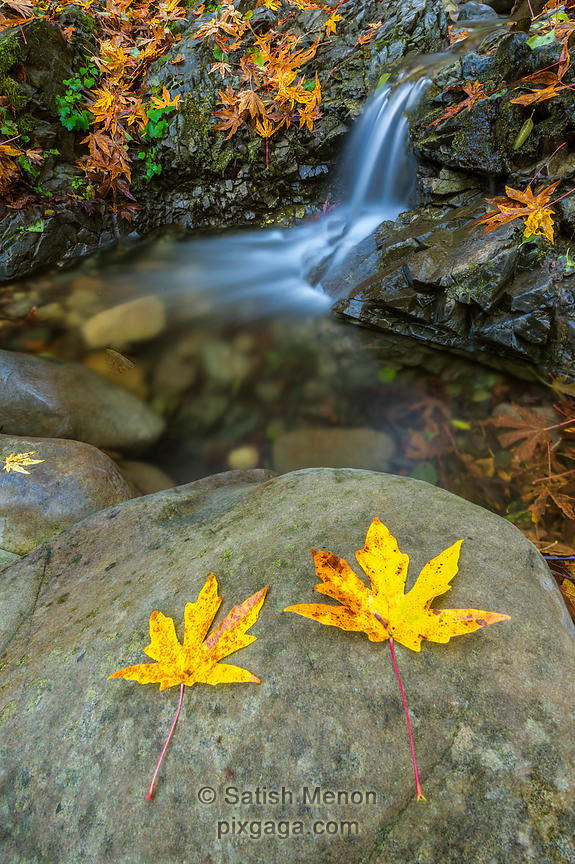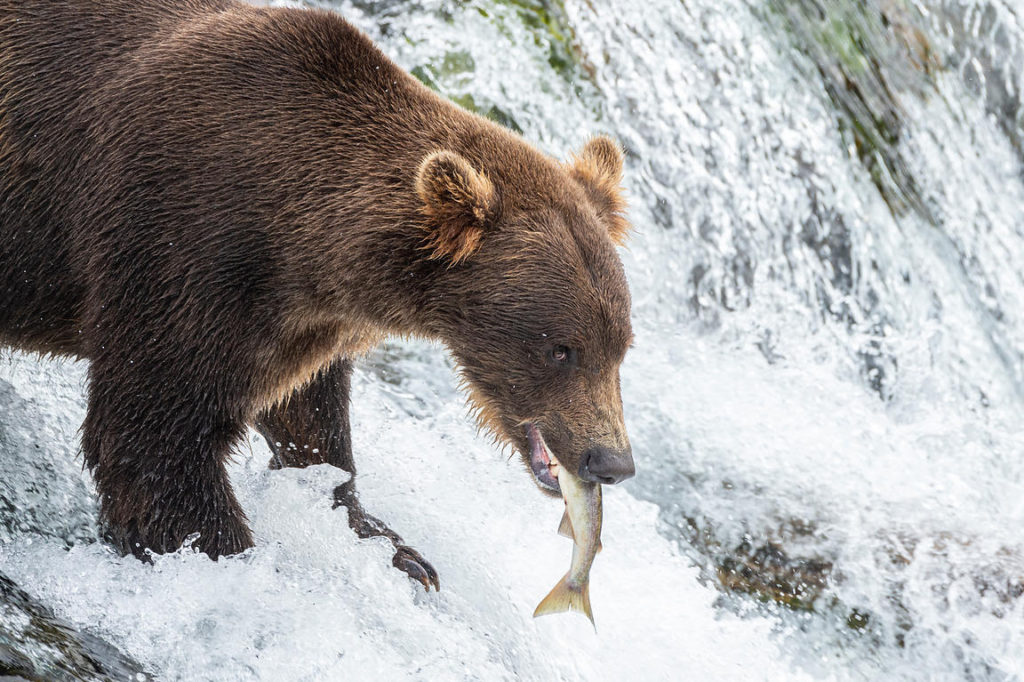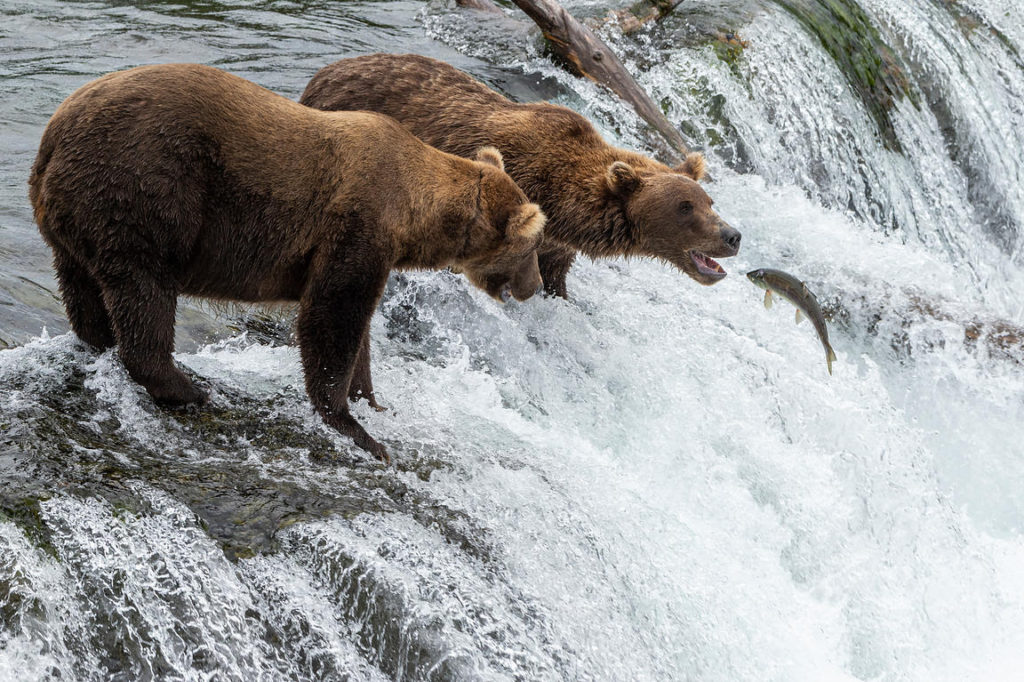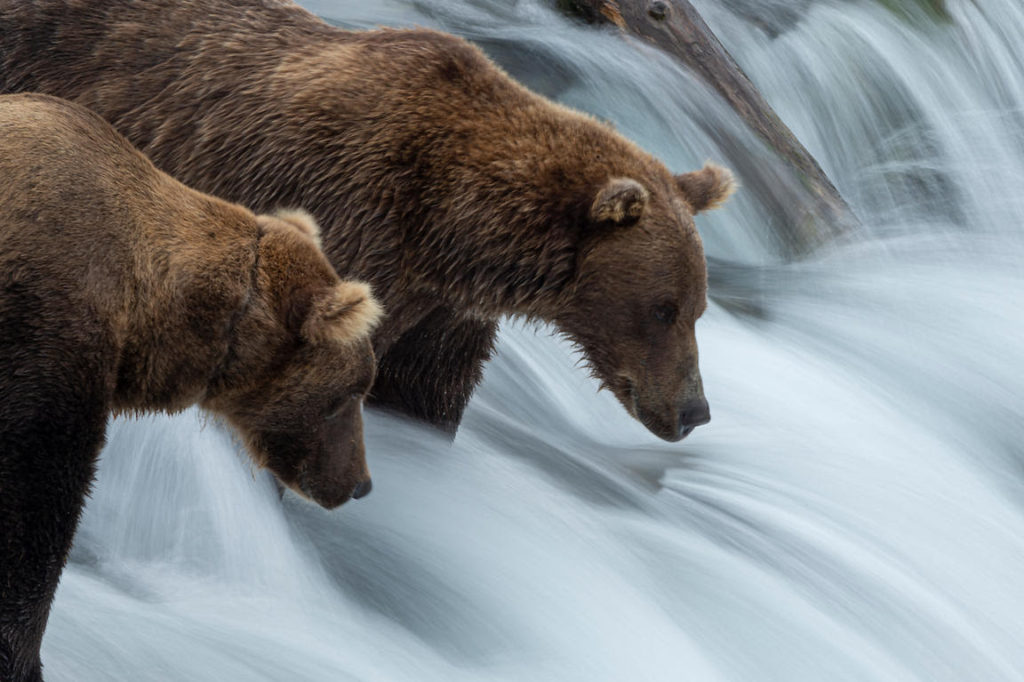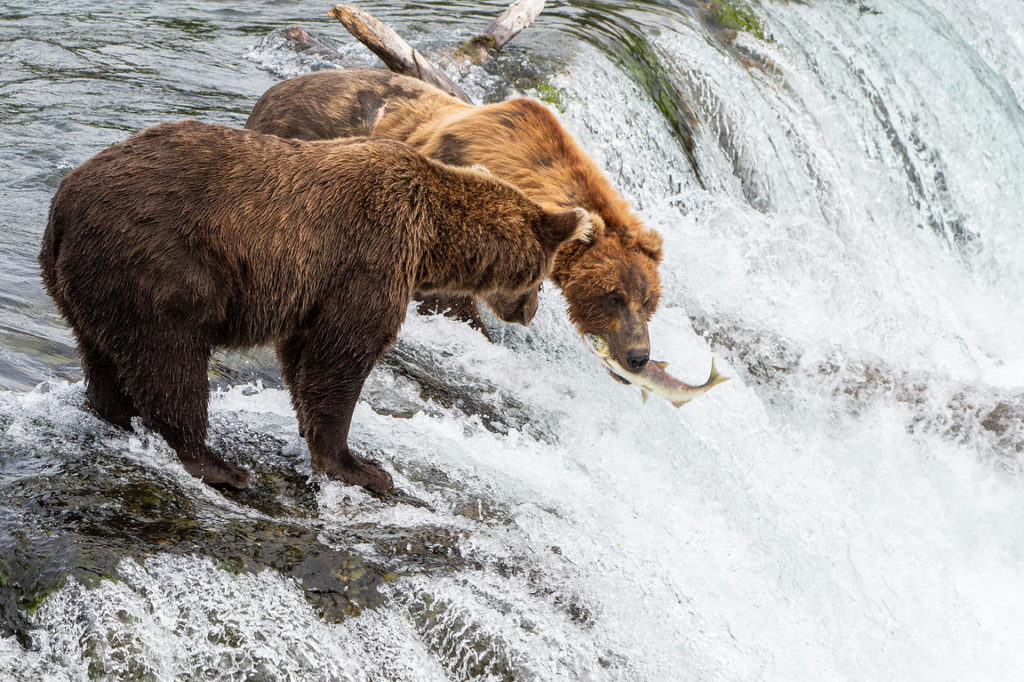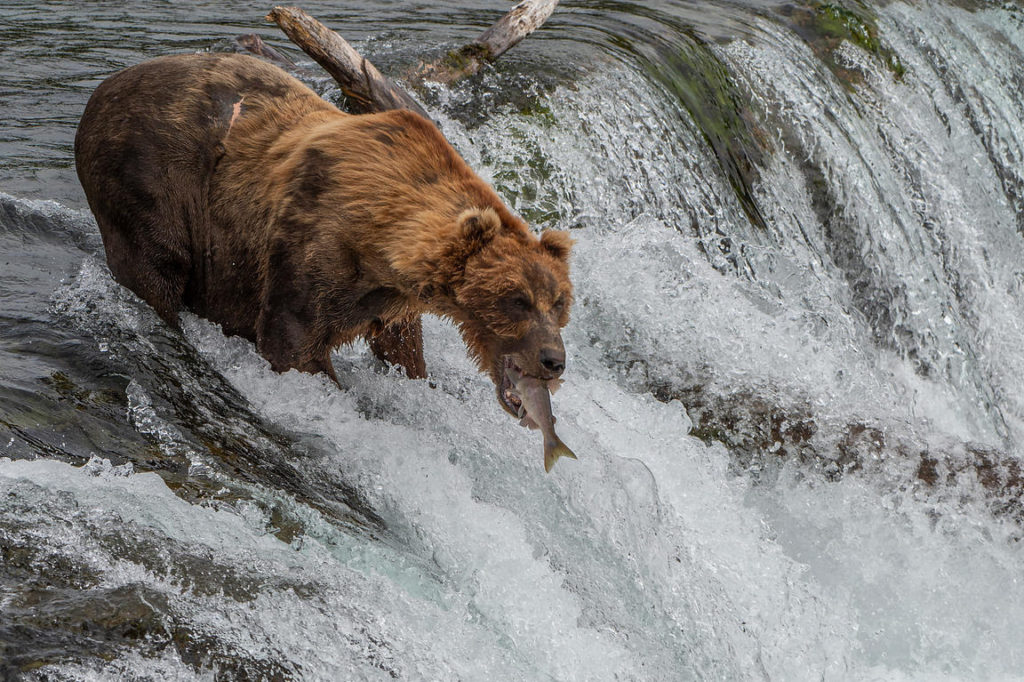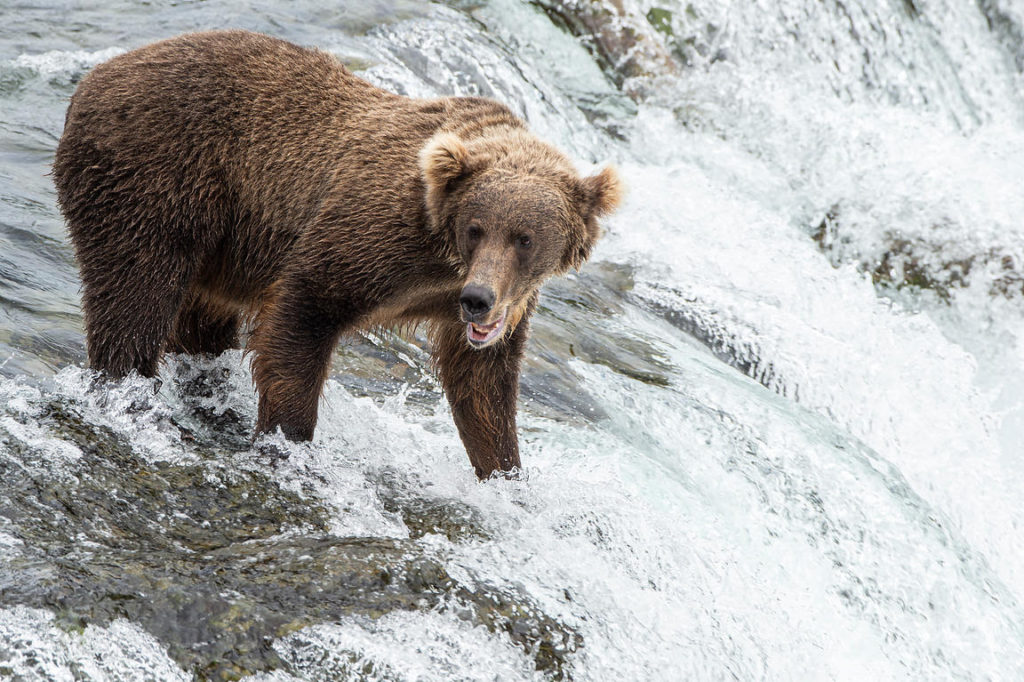I went to Rainbow Falls in California’s Eastern Sierra over the July 4th weekend. My first visit to the falls was in the middle of the day, with my family. Since the sun was shining into the falls at that time of the day, it formed a rainbow at the base of the falls upon which it is named. From a photographer’s perspective, the light was too harsh and no good waterfall image could be produced at that time.
I came back the next day, early enough before sunrise, to get the light right for a waterfall image. While the grand view from the standard vista point was great, it did not offer anything satisfying for me. For example, one search for Rainbow Falls, CA in images.google.com, yields several images of the standard view. I began by making a standard view image as well. Here it is. It does not impress me and therefore it has not been published in my web gallery.

Rainbow Falls, CA. (Standard View from Vista Point)
After getting the standard shot out of the way, I started exercising my visual imagination to make additional more satisfying images. Using my 70-200mm f2.8 lens at 200mm, I made a frame that was later cropped to this 1:3 format. This is a section of the waterfall towards the right side of the view from the vista point. To me, this image is a compelling composition. It has a series of waters falling from the top right into the bottom one-thirds of the image, where there is a diagonal flow of water from the left to the right. There are distinct shapes and flows in the top, middle and bottom one-thirds of the image that grabs attention.

Rainbow Falls (section), CA, USA
Another shot using my 70-200mm f2.8 lens with 2x teleconverter (set at effective 400mm), is shown below.

Rainbow Falls (section), CA, USA
This one shows a single strand of waterfall to the right of the image counter-balancing the diagonal cascade going left to right.
Another 400mm shot is shown below.

Rainbow Falls (section), CA, USA
This one emphasizes the wall of water towards the right of the view from the vista point. The wall of water and its shapes/texture is counter balanced by the rocks at the bottom right.
As I wrapped up my shoot, I used the same 400mm setup to frame a couple of shots of the runoff from the falls.

Runoff from Rainbow Falls, CA.
This one showcases the whites from the falls runoff counterbalanced by the green grass on the shore. I saw this first and upon closer examination, I found a dead fallen tree bark whose branches pointed towards these whites. I thought that they formed a perfect set of complementary subjects to juxtapose in an image. Here it is.

Dead tree bark and whites from Rainbow Falls runoff, CA, USA
Notice how the shapes in the branches of the dead tree bark, mirrors the shapes of the whites (the branches pointing one way and the whites following it).
Using this post, I want to encourage more photographers to look beyond the obvious. The first thing that you see when you get to location should be photographed, but one should not stop there. The better photographs come from staying there, a bit longer, and looking for what else is there, or, how else the scene may be photographed. Changing viewpoints and changing lenses are the simple exercises to get you started on the road to eventually change what you see and see more.
